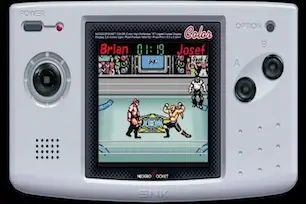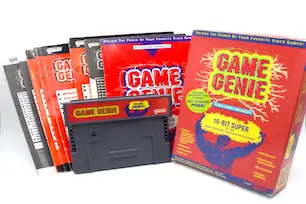When most people think of handheld gaming, the first image that pops up is the Game Boy — that chunky gray brick with a green-tinted screen and a copy of Tetris locked in.
And rightfully so. The Game Boy family — including the original Game Boy, Game Boy Pocket, and Game Boy Color — sold over 118 million units worldwide, becoming a cultural icon and redefining portable gaming for generations.
But it didn’t just drop out of the sky.
The Table of Contents
Early Innovators in Handheld Consoles
Long before Nintendo’s 1989 juggernaut arrived, a handful of other handheld consoles were already testing the waters — bringing new ideas to the table. They didn’t always succeed commercially, but their innovations laid the groundwork for what handheld gaming would become.
already testing the waters — bringing new ideas to the table. They didn’t always succeed commercially, but their innovations laid the groundwork for what handheld gaming would become.
Quick Note: We recently ranked the original Game Boy the best handheld game system of the 1990s, but to understand why, you’ve got to look at what came before it.
Great Ideas Don’t Always Win
Before Nintendo struck gold, other companies were already making bold moves in handheld gaming. Think of it like a retro episode of Shark Tank — timing, market readiness, and consumer interest were everything.
Just like the investors who passed on DoorBot (which later became Ring and sold to Amazon for $1 billion), early handheld devices were often overlooked or dismissed. But they introduced ideas that would become industry standards.
Let’s rewind the tape and shine a light on the forgotten innovators that paved the way.
Microvision (1979): The First Cartridge-Based Handheld
Released by Milton Bradley, the Microvision was the first handheld video game console to use interchangeable cartridges. It debuted at $49.99 (about $200 today), with games like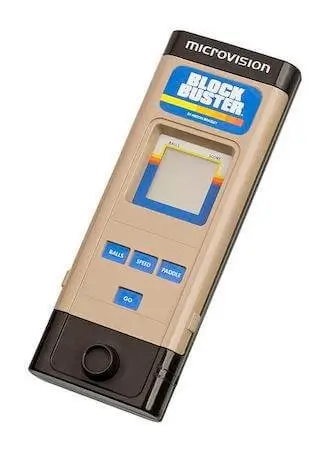 Block Buster and Star Trek Phaser Strike that featured modular faceplates and different button layouts per title.
Block Buster and Star Trek Phaser Strike that featured modular faceplates and different button layouts per title.
It was ahead of its time — and also a bit cursed. Screen rot, limited tech, and short battery life ended its run by 1981.
“There’s a certain elegance to the Microvision, but it’s definitely more of a collector’s piece than something you’ll want to play.” — The Video Game Critic
Still, it sparked the idea that you could carry multiple games in one device — something Nintendo would soon perfect.
Game & Watch (1980): Nintendo’s First Handheld Console
Before the Game Boy, Nintendo cut its teeth on the Game & Watch series — pocket-sized devices, each loaded with a single game, a clock, and an alarm.
Launched in 1980, the series sold over 43 million units worldwide with hits like Ball, Fire, and Donkey Kong. It was also the birthplace of the D-pad, which became a staple of Nintendo design.
“These were created at a time when portable gaming didn’t exist, so it’s incredible that Nintendo had the foresight to invest time and money into this project.” — Retro Dodo
Simple, charming, and addicting — Game & Watch proved portable gaming wasn’t just a novelty. It was viable.
Entex Select-A-Game (1981): Arcade-Style Gaming On the Go
The Entex Select-A-Game was an ambitious entry — a handheld with interchangeable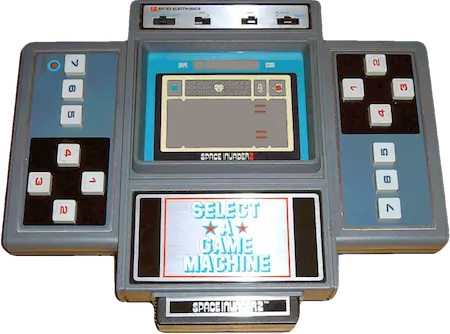 cartridges and a mission to bring arcade action into your hands.
cartridges and a mission to bring arcade action into your hands.
With just six games, including Space Invader and Turtles, it didn’t make a huge splash. But the multi-game functionality was a clear step toward the future.
“The display consisted of a very simple LED grid (about 9x9), overlaid with a color screen for each game.” — Handheld Museum
It may not have lasted long, but it proved handheld consoles could be more than one-and-done devices.
Epoch Game Pocket Computer (1984): Programmable & Educational
One of the most unique pre-Game Boy consoles came from Japan: the Epoch Game Pocket Computer. Released in 1984, it looked like a calculator but featured a BASIC interpreter, allowing users to code their own programs.
With a monochrome 75×64 screen, 6 MHz processor, and over 60 hours of battery life, it was powerful for its time — even if it only had five commercial game cartridges.
“It was Japan-only, and sales were probably low, which makes this a very rare machine nowadays.” — Chris Covell
It wasn’t flashy, but it hinted at a future where handhelds weren’t just for playing — they were for creating.
The Arrival of the Game Boy (1989): The Game Changer
Then came the real game-changer: Nintendo’s Game Boy. Released in 1989, this gray, brick-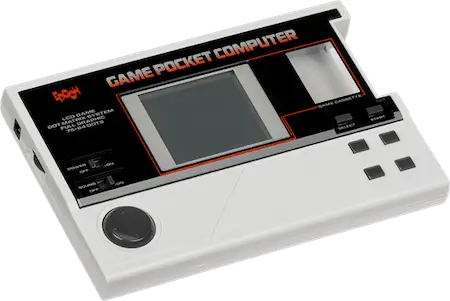 like device was affordable, reliable, and portable — everything a gamer could want.
like device was affordable, reliable, and portable — everything a gamer could want.
Bundled with Tetris, it hooked casual and hardcore gamers alike. With its cartridge-based system, long battery life, and link cable for multiplayer, it became the gold standard of handheld gaming.
Specs Snapshot:
- 2.6-inch monochrome LCD screen
- A/B buttons + D-pad + Start/Select
- 10–15 hours on 4 AA batteries
- Launch library included Tetris, Super Mario Land, and Zelda: Link’s Awakening
This wasn’t just a toy — it was the future of gaming in your pocket.
Personal Flashback: The Magic of Tetris
When I first got my hands on a Game Boy in 1989, Tetris was the gateway drug. It was the first time I could take a fully immersive game anywhere — on road trips, at the dentist’s office, even hiding under the covers past bedtime.
That “just one more line” feeling made the Game Boy unforgettable. Tetris wasn’t just a game — it was a cultural moment that showed the world how good handheld gaming could be.
And it’s not alone. There are plenty of nostalgic video games that still hold up today — timeless classics that defined our childhoods and continue to resonate with new generations of players.
From Game Boy to Nintendo Switch: Handhelds Evolve
Fast forward to today, and Nintendo’s Switch stands as the Game Boy’s modern counterpart.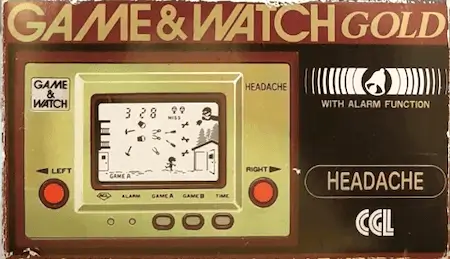 Since its 2017 launch, it’s sold over 150 million units, blending home console power with handheld portability.
Since its 2017 launch, it’s sold over 150 million units, blending home console power with handheld portability.
HD graphics, detachable Joy-Cons, online play — the Switch is portable gaming fully grown up.
While the Game Boy brought handheld gaming to the masses, the Switch brought it into the modern age.
Looking Ahead: What’s Next for Handheld Gaming?
Handheld gaming keeps evolving. Here’s what’s coming down the pipeline:
- Cloud gaming removes the need for powerful hardware
- AR/VR adds immersive layers to on-the-go gaming
- Cross-platform play unites handhelds, consoles, and PCs
- Biometrics and haptics bring physical feedback to gameplay
- Improved battery life and cooling support high-end portable experiences
What started as a novelty is now a mainstream way to play — and it’s only getting better.
For a closer look at how mobile gaming and tailored handheld experiences are shaping the next era of gaming, check out our guide on how to play portable video games anywhere.
Final Thoughts: The Forgotten Consoles That Made It All Possible
The Game Boy might be the most iconic handheld console of all time, but it didn’t blaze that trail alone.
Before it came the Microvision, Game & Watch, Select-A-Game, and Epoch’s Game Pocket Computer. They weren’t commercial hits, but their DNA lives on in every modern portable console.
And hey — if you’ve got any of those hidden gems lying around, we’d love to take a look.
🎮 Sell Your Original Game Boy Games Here
Whether you're downsizing your collection or cashing in on your childhood, we make it easy to sell old Game Boy games with fair quotes and fast payouts. Wondering where to sell Game Boy games safely and securely? We've got you covered.
What are Your Thoughts!
What are your favorite handheld consoles or games? Did you have a memorable experience with the Game Boy or any other device? Share your thoughts and nostalgia in the comments below!




